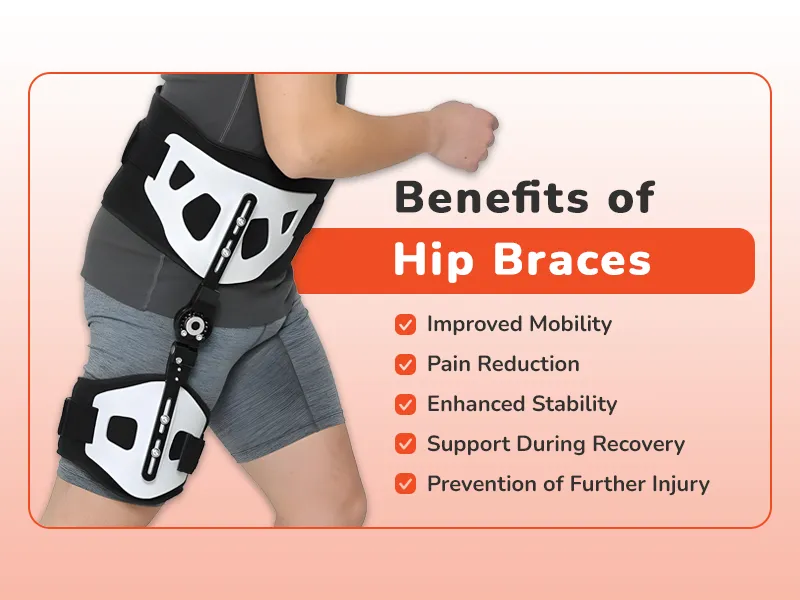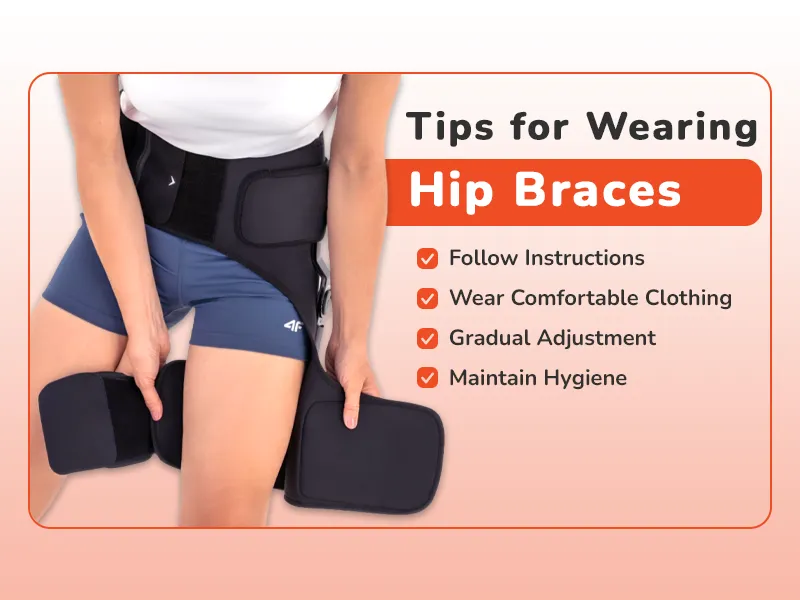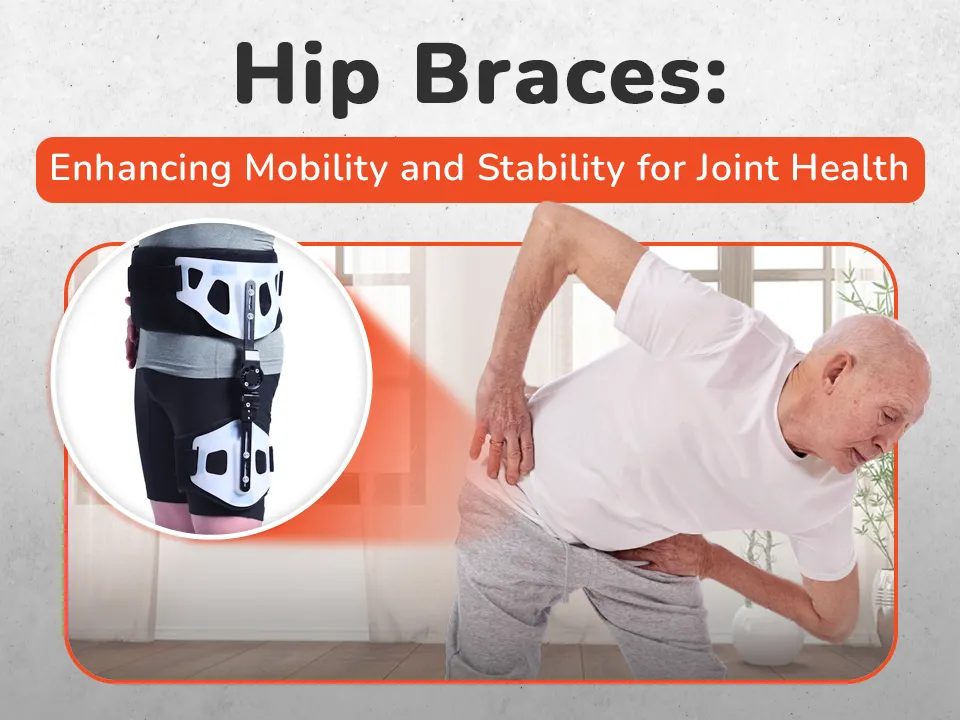Hip Braces: Enhancing Mobility and Stability for Joint Health
Navigating the path to optimal joint health and mobility introduces us to the invaluable role of hip braces. These devices are more than mere aids; they are critical catalysts for enhancing movement and ensuring stability. Designed with precision to offer both support and comfort, hip braces embody a crucial component in the recovery process for individuals facing hip-related challenges. This educational blog seeks to delve into the multifaceted world of hip braces, shedding light on their types and their significant benefits and providing practical guidance on selecting the right brace to meet individual needs. From understanding the different designs catered to various conditions to recognizing the potential life-enhancing benefits of the right fit, our exploration aims to equip readers with comprehensive insights into making informed decisions.
Understanding Hip Braces
Hip braces are crucial support devices for those experiencing hip issues, providing essential stability, alleviating pain, and improving mobility. Available in various designs, these braces are carefully tailored to meet specific needs, from facilitating post-surgical healing to offering continuous support for chronic conditions such as arthritis. Each type of hip brace is thoughtfully engineered to target different challenges—some are designed to restrict movement and ensure proper healing post-operation, while others focus on offering flexible support to manage chronic pain effectively. The selection of a hip brace is a critical step that should be informed by the individual’s particular condition and recovery or support goals. With options ranging from rigid structures for maximum immobilization to softer, more adaptable designs for everyday wear, understanding the nuances between braces is key to finding the most beneficial fit. This tailored approach ensures that individuals can manage their hip conditions effectively and move towards regaining their mobility and quality of life with confidence.
Types of Hip Braces
Hip braces are categorized into various types to address specific needs and conditions:
- Post-operative Braces: Designed for use in the critical healing period following hip surgery, these braces play a pivotal role in recovery. Their primary function is to limit the range of motion, preventing movements that could disrupt the healing process or cause injury to the surgical site. By ensuring the hip remains in a controlled position, these braces facilitate a safer and more effective healing environment.
- Compression Braces: These braces are engineered to offer snug, uniform compression around the hip area. The compression serves multiple purposes: it helps reduce swelling by encouraging fluid drainage away from the affected area, provides mild support to alleviate pain, and enhances proprioception (the sense of joint position), which can benefit those with chronic conditions like arthritis or minor strains.
- Stabilizing Braces: Particularly useful for individuals active in sports or those prone to injuries during physical activities, stabilizing braces are designed to offer enhanced support without significantly restricting movement. They help maintain proper hip alignment and stability during dynamic movements, reducing the risk of re-injury or exacerbating existing conditions. These braces often feature adjustable straps or bands that allow for a customized fit, ensuring the brace stays in place during vigorous activities.
Each type of hip brace is developed with specific objectives, catering to different recovery phases or management of hip conditions. The right hip brace can be a valuable tool in maintaining hip health and mobility, whether it’s aiding in post-operative recovery, managing symptoms of chronic conditions, or providing additional support during high-risk activities.
Benefits of Hip Braces
Hip braces offer a range of benefits, crucial for individuals dealing with hip issues:

- Improved Mobility: Stabilizing the hip joint is key to safer, more confident movement. Hip braces play a significant role by providing the support necessary to move freely, reducing the fear of pain or injury. This enhanced stability can be particularly beneficial for individuals looking to maintain an active lifestyle while managing a hip condition.
- Pain Reduction: One of the primary benefits of wearing a hip brace is reducing pain. By limiting movements that could exacerbate an underlying condition, these braces help manage and mitigate discomfort. This is especially important for chronic conditions where pain management is a continual concern.
- Enhanced Stability: Hip braces provide essential support for those with hip dysplasia or those recovering from an injury. They ensure that the hip joint remains in an optimal position, thereby enhancing overall stability. This support is crucial for day-to-day activities and preventing conditions that can lead to further mobility issues.
- Support During Recovery: Hip braces are invaluable in the aftermath of hip surgery. They ensure that the hip is kept in the correct position, aiding in the healing process and helping to avoid complications. This aspect of hip braces is particularly critical, as it directly impacts the effectiveness of surgical interventions and recovery speed.
- Prevention of Further Injury: Hip braces play a preventative role by restricting certain movements. They protect the hip from motions that could lead to re-injury or worsen an existing condition. This preventive measure is essential for individuals in the recovery phase and those involved in activities that put them at risk of hip injuries.
Overall, the benefits of hip braces are multifaceted, addressing not just the physical aspects of hip health but also enhancing the user’s quality of life by allowing for greater independence and confidence in daily activities.
Choosing the Right Hip Brace
Choosing the right hip brace is a crucial decision that directly impacts its effectiveness in supporting recovery, providing stability, or enhancing performance in sports. Here are essential considerations to guide your selection:
- Purpose: Clearly defining the primary reason for using a hip brace sets the foundation for your choice. If the brace is intended for post-operative recovery, it will likely need to be more rigid to restrict movement and facilitate healing. A brace that balances stability with flexibility might be more appropriate for chronic conditions requiring ongoing support. Athletes or those engaging in physical activities might seek braces that provide support without compromising range of motion. Understanding your specific needs is the first step in narrowing down the options.
- Size and Fit: A hip brace must fit well to be effective. A brace that’s too tight may restrict circulation and cause discomfort, while one that’s too loose won’t provide adequate support. Many braces come in various sizes; some offer adjustable features such as straps or bands that allow for a more customized fit. As the manufacturer advises, taking accurate hip and waist measurements can help you choose a brace that fits well and offers the support you need.
- Material: The material of a hip brace affects not only its comfort but also its functionality. Breathable and skin-friendly materials are essential for comfort, especially if you need to wear the brace for extended periods. Fabrics that wick away moisture can help keep the skin dry and prevent irritation. Additionally, the material’s durability is something to consider, especially for braces for long-term use or during physical activities. Look for materials that can withstand wear and tear while maintaining their supportive properties.
Selecting the right hip brace involves considering these critical factors to ensure the brace meets your specific needs, offering the right balance of support, comfort, and functionality. Consulting with a healthcare provider can also provide valuable insights and recommendations based on your condition and lifestyle requirements.
Tips for Wearing Hip Braces
When incorporating a hip brace into your daily routine, it’s crucial to do so in a way that maximizes its benefits while ensuring comfort and safety. Here are some valuable tips for wearing hip braces:

- Follow Instructions: Begin with understanding and adhering to the guidance provided by healthcare professionals. This includes how and when to wear the brace, as these instructions are tailored to your specific condition and recovery goals. Proper usage is key to ensuring the brace functions effectively, helping you on your path to recovery or improved mobility.
- Wear Comfortable Clothing: Selecting the right clothing to wear with your hip brace can significantly impact your comfort levels. Opt for soft, flexible, breathable fabrics that won’t irritate your skin under the brace. Clothes that are too tight may restrict the brace’s functionality or cause discomfort, so it’s best to choose garments that allow the brace to fit and function as intended.
- Gradual Adjustment: Allow yourself time to get accustomed to wearing a hip brace. Initially, you may need to wear the brace for shorter periods and gradually increase as your healthcare provider recommends. This gradual adjustment can help your body adapt to the support and restriction provided by the brace, ensuring you reap the full benefits without causing additional strain or discomfort.
- Maintain Hygiene: Keeping your hip brace clean is essential for comfort and hygiene, especially if you wear it daily. Follow the cleaning instructions provided by the manufacturer carefully, as proper care can extend the life of the brace and ensure it remains effective and comfortable to wear. Regular cleaning helps prevent the buildup of sweat and bacteria, reducing the risk of skin irritation or infections.
Adhering to these tips can significantly enhance your experience with a hip brace, ensuring it provides the intended support and comfort while you navigate your recovery or manage your condition. Remember, the goal of a hip brace is to aid in your journey toward better mobility and health, and how you wear and care for your brace can influence your progress.
Read More: Improving Mobility and Pain Relief with Hip Braces
Maintenance and Care of Hip Braces
Proper maintenance is key to maximising the benefits and longevity of a hip brace. Adhering to the manufacturer’s care instructions for regular cleaning is essential to prevent the build-up of dirt and bacteria, which could compromise the brace’s effectiveness and the wearer’s skin health. Additionally, routine inspections for signs of wear and tear are crucial. Over time, straps may stretch, fastenings may weaken, and the material degrades, reducing the brace’s supportive capabilities. By addressing these issues promptly, you can ensure your hip brace continues to provide the optimal support and stability needed for your recovery or ongoing condition management.
When to Seek Professional Advice
Using a hip brace should not be taken lightly or made in isolation. Consulting with a healthcare professional is an essential step in the process. They possess the expertise to assess your situation and recommend a hip brace that aligns with your health requirements. Whether recovering from surgery, managing a chronic condition, or seeking to prevent future injuries, a healthcare provider can guide you towards the most appropriate type of brace, ensuring it contributes positively to your overall treatment plan.
Conclusion
Hip braces are a critical resource for individuals striving to improve mobility, alleviate pain, and enhance joint health. The journey to improved joint health is not a solitary endeavour but a collaborative one, involving the right medical devices, guidance from healthcare professionals, and a committed approach to self-care. With the correct selection and diligent use of a hip brace, individuals can experience a marked improvement in their quality of life, navigating daily activities with greater ease and confidence. The path to recovery or management of hip-related issues is made smoother with the support of a well-chosen hip brace, underscoring the importance of informed choice and proper maintenance in the pursuit of optimal joint health.

